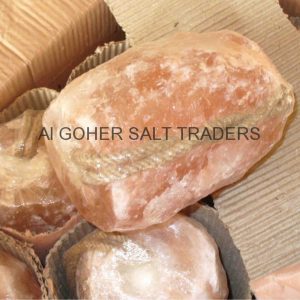Salt licks are a vital resource in the animal kingdom, offering essential minerals and nutrients to wildlife and livestock. This article explores animal salt licks in-depth, covering their types, benefits, natural and artificial forms, ecological importance, and how they are used in agricultural and wildlife settings.
Algohar World natural salt lamps that are believed to provide various benefits, combining both the aesthetic appeal and the potential health advantages associated with Himalayan salt lamps.
What Is a Salt Lick?
A salt lick, also known as a mineral lick, is a deposit of salt and other minerals that animals instinctively seek to supplement their diets. These licks can be natural or artificial and play a crucial role in animal health and survival.
Natural Salt Licks
Natural salt licks are found in the wild as mineral deposits in soil, rocks, or water sources. Wildlife often congregates at these locations to lick the minerals, hence the name.
Artificial Salt Licks
Farmers and wildlife managers create artificial salt licks using mineral blocks or loose salt mixtures to provide animals with easy access to essential nutrients.
Why Do Animals Need Salt Licks?
Salt and other minerals are essential for various physiological processes in animals. Here’s why salt licks are crucial:
Essential Nutrients
Sodium, calcium, phosphorus, and magnesium are vital for nerve function, muscle contraction, and bone development.
Trace elements like zinc, copper, and iodine support immunity, metabolism, and reproduction.
Dietary Supplementation
Wild and domesticated animals may not get enough minerals from their diet, especially in areas with mineral-deficient soil or vegetation.
Behavioral Drive
Instinct drives animals to seek salt licks to fulfill nutritional deficiencies, ensuring survival and reproductive success.
Types of Salt Licks
Salt licks are available in various forms, each suited to different animal needs and environmental conditions.
Natural Salt Licks
Rock Salt Deposits: Found in mountainous or rocky terrains.
Saline Water Sources: Lakes, springs, or puddles rich in dissolved minerals.
Soil Licks: Mineral-rich patches of earth animals consume or lick.
Artificial Salt Licks
Block Salt Licks: Compact mineral blocks, often flavored to attract animals.
Loose Salt Mixes: Granular salts spread on the ground or mixed with feed.
Custom Mineral Blocks: Formulated for specific species, containing balanced nutrients.
Benefits of Salt Licks for Animals
Salt licks offer a range of health and ecological benefits:
For Wildlife
Nutritional Support: Supplements diets lacking essential minerals.
Population Health: Improves fertility and immune function.
Behavior Regulation: Reduces the risk of animals straying far in search of nutrients.
For Livestock
Growth and Development: Supports bone growth and weight gain.
Milk and Meat Quality: Enhances productivity and nutrient content.
Disease Prevention: Strengthens immunity against common livestock illnesses.
Note: animal salt lick are indispensable for supporting the health and vitality of wildlife and livestock.
Ecological Impact
Salt licks create biodiversity hotspots, attracting a variety of species.
Facilitate seed dispersal through animal activity around licks.
How Animals Use Salt Licks
Wildlife
Ungulates: Deer, elk, and moose frequently visit licks to replenish minerals lost through antler growth.
Birds: Some bird species peck at mineral-rich soils or water for sodium.
Primates: Gorillas and monkeys consume soil or lick rocks to meet mineral needs.
Livestock
Cattle and Buffalo: Require salt to balance electrolytes and promote digestion.
Sheep and Goats: Benefit from trace minerals for wool quality and reproduction.
Horses: Salt licks are critical for hydration and muscle function.
The Role of Salt Licks in Agriculture
Livestock Management
Salt licks are an integral part of animal husbandry, helping farmers maintain healthy and productive herds.
Placement: Licks are strategically placed in grazing areas to encourage even pasture use.
Seasonal Use: Increased demand during hot weather due to higher sodium loss through sweating.
Custom Blends: Farmers tailor mineral blocks to address specific deficiencies in their region.
Economic Benefits
Reduced veterinary costs due to healthier animals.
Increased yield in meat, milk, and wool production.
Wildlife Conservation and Salt Licks
Attracting Wildlife
Salt licks are used in wildlife reserves and sanctuaries to attract animals for observation or photography.
Habitat Management
Enhances animal survival in areas with mineral-poor ecosystems.
Prevents wildlife from straying into human settlements in search of salt.
Monitoring Populations
Camera traps and observation setups near salt licks provide valuable data on animal behavior, population dynamics, and health.
Challenges and Risks Associated with Salt Licks
While beneficial, salt licks can pose certain challenges:
Overuse and Dependency
Excessive salt intake can lead to health issues like kidney strain.
Artificial licks may cause animals to become overly dependent.
Disease Transmission
Shared licks can become hotspots for the spread of diseases among animals.
Environmental Impact
Overconcentration of animals can damage vegetation and soil around licks.
Pollution risk from artificial licks if improperly managed.
Creating and Maintaining Artificial Salt Licks
9.1 Selecting a Location
Place licks in areas frequented by animals, away from predators.
Ensure accessibility for both livestock and wildlife.
Choosing the Right Type
Use blocks for durability and slow consumption.
Opt for loose salt in areas where blocks are impractical.
Regular Maintenance
Refill licks as needed and clean surrounding areas to prevent contamination.
Monitor animal activity to assess effectiveness.
Conclusion
Animal salt licks are indispensable for supporting the health and vitality of wildlife and livestock. By providing essential minerals, they play a key role in ecological balance, agricultural productivity, and conservation efforts.While the benefits of salt licks are vast, it is crucial to implement them responsibly, considering ethical and environmental implications. Whether in the wild or on the farm, salt licks are a simple yet powerful tool for nurturing animal life.
